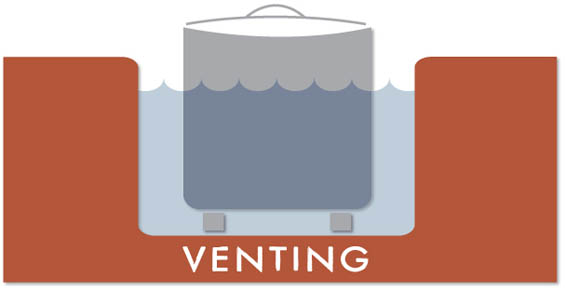The Cardinal Rules of Stock Making
NEVER SALT STOCK
Ever. Break this rule and Marie-Antoine Carême will rise from his grave to haunt you as he’s surely haunting the purveyors of salty pre-made stock. While stocks frequently make use of a bouquet garni or sachet, please note that these never contain salt. This rule was created for two very good reasons:
First, stocks are, fundamentally, building blocks. You can turn them into a multitude of different things, and your plans for them can change at any moment. Putting salt in while making a stock means you’re committed to that salt later. Second, part of stock making is concentration of flavors. What seems like a good amount of salt now will be significantly stronger by the time you’re done. Salt your veal demi-glace when it’s in the stock stage, and you’ll be very sorry later.
SKIM STOCK OFTEN IN THE BEGINNING
I wouldn’t worry about this when making veggie stock, but if its got meat or fish in it, you need to skim it. During the simmering process fat and impurities will float to the surface and gather in a foamy scum. Have a spoon or a ladle handy and get that stuff out of there before it can cause any trouble. Does that mean you need to stand in front of your chicken stock all night to make sure it doesn’t cloud? No. It’s most important at the beginning. Skimming carefully and often near the start should catch most of the offending material.
NEVER BOIL STOCK
Allowing the water to boil will dissolve the impurities you’re supposed to be skimming back into the stock, muddying its clarity and flavor. Not only that, but the energetic movement of the water will actually break minute pieces of your ingredients off and cast them adrift, further clouding things. What you’re looking for is a constant simmer, don’t let that temperature reach 212.
THE BETTER YOUR INGREDIENTS, THE BETTER YOUR STOCK
Of course, stock is a creation of frugality, the idea is to extract every last bit of flavor out of all the ingredients that come into your kitchen. With that in mind, you’re totally within your rights to use floppy carrots or celery, or even sprouted onions. That said, using fresh vegetables will give you a better result every time, so keep that in mind. Also try to filter your water if it has noticeably high chlorine levels.
STRAIN YOUR STOCK WHEN IT COMES OFF THE STOVE
Pour the contents of your stock pot through the finest strainer or sieve you can to get out any impurities and chunks your skimming may have missed. If you’re concerned your strainer isn’t fine enough, line it with cheesecloth.
ALWAYS DROP YOUR STOCK QUICKLY (UNLESS YOU’RE USING IT IMMEDIATELY)
“Dropping” stock doesn’t mean making a big mess on the floor. Rather, it is the culinary industry’s term for cooling your stock down as quickly as possible prior to putting it in the fridge or freezer. The easiest way to do this in a home kitchen with a large stock pot is to put the pot in your sink and fill the space around it with as much ice and ice water as you have. Putting your stock pot up on something that raises it above the bottom of the sink so water can get under it (“venting”) makes this even more effective.

The reason for going to this trouble? Sanitation. Stock is a potential bacterial playground, and you need it to get it cooler than 41 degrees F as quickly as possible to protect against bacterial growth. Dumping it in your fridge or freezer right off the stove will not only work too slowly, but it will also raise your refrigerator’s internal temperature enough to put other foods at risk.
CAN YOU BREAK THESE RULES?
Certainly. Most of them anyway. If you’re not planning on making consommé or clear soups, and feel that your time and money is better served by making a decent stock easily, you can ignore rules two and three. You can even stop skimming after the initial bone blanch and pick the big pieces out of the pot rather than straining. It won’t be the best stock in the world, but it’ll be acceptable. Just don’t break rules 1 and 6.


